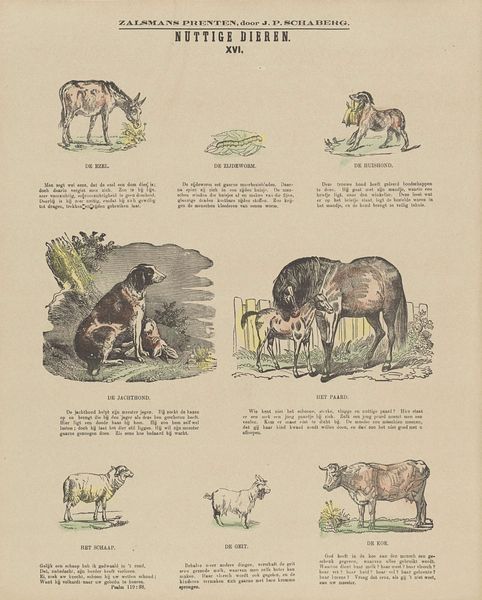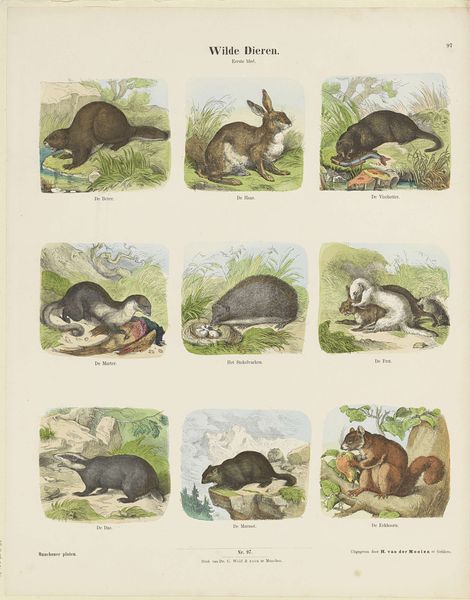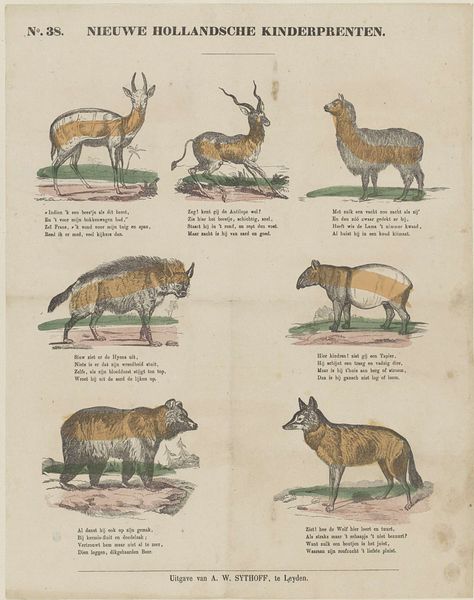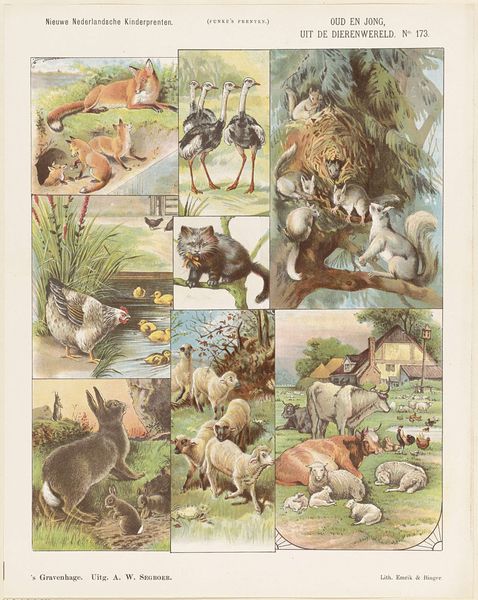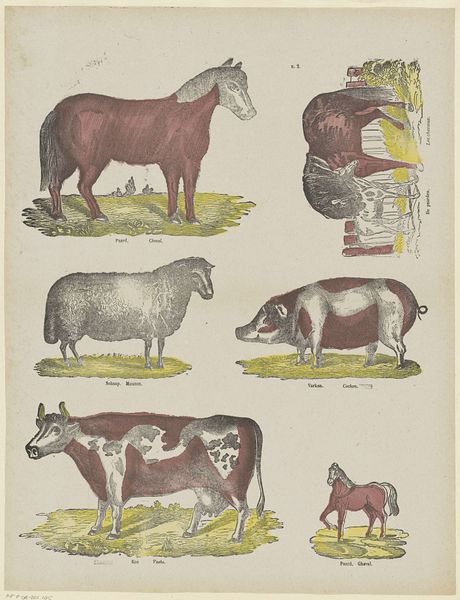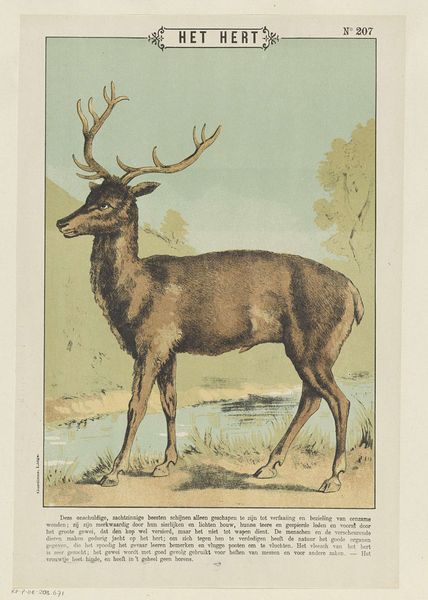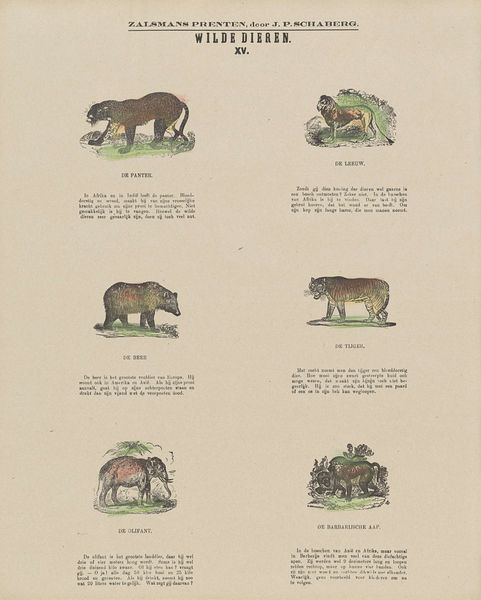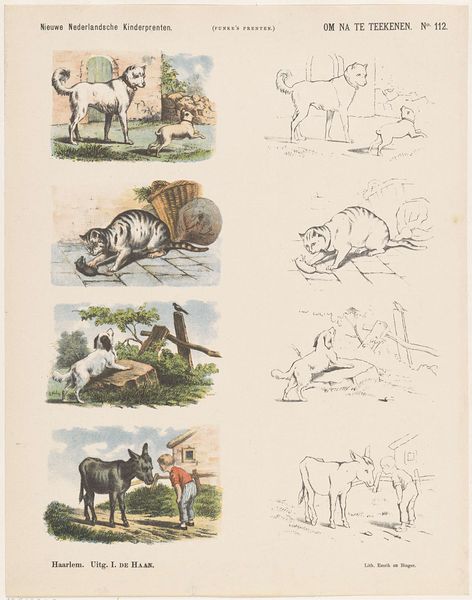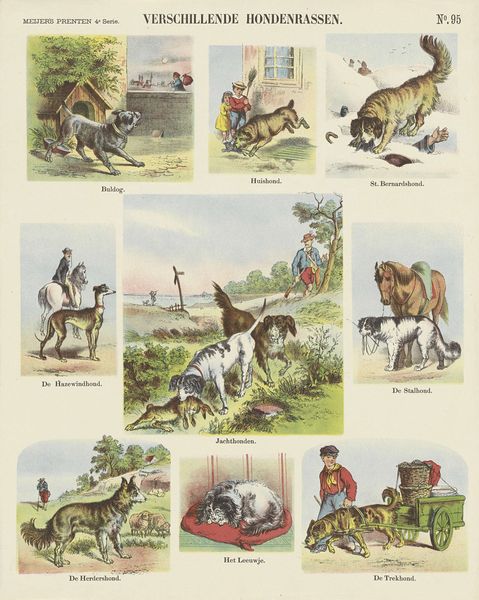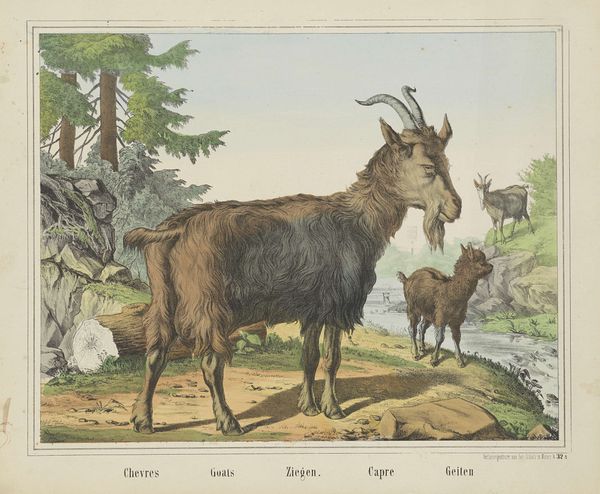
print, watercolor
#
animal
# print
#
landscape
#
watercolor
#
naturalism
#
watercolor
Dimensions: height 443 mm, width 354 mm
Copyright: Rijks Museum: Open Domain
Curator: Here we have “Wilde Dieren” or “Wild Animals,” a print dating circa 1843 to 1920, created by Hermann van der Moolen, using watercolor. Editor: My first impression is one of gentleness and maybe a bit of naïve charm. The soft watercolors give each animal a kind of vulnerability, despite their inherent wildness. Curator: Indeed. Note the almost grid-like composition; the artist uses a consistent framing for each animal, contained within these somewhat illustrative squares. It really draws attention to the contrast in form between the wolf, the boar, and the lynx. Editor: I see how those formal choices direct us, but I immediately think about how human systems, like gridding, can try to control and compartmentalize nature. There’s a tension here: each animal has a designated "place," minimizing their ecological role, almost like specimens rather than individuals. Curator: That reading is, well, interesting, though I'm focused on the technique. The watercolor application is fairly uniform throughout, lending a sense of cohesion, despite the differing habitats and physiognomies of each animal presented. Editor: But look at the context! Prints like this often reinforced cultural biases of the era about the natural world and our place in it. Representing nature as distinct and separable creates justification for exploitation. What does "wild" even mean in this construct? Is it wild just because it hasn't been tamed? Curator: Perhaps. But by focusing on their individual features, the artist directs attention to their anatomical accuracy. It’s clear observation turned into aesthetic representation, prioritizing the structural elegance of form over the implied social critiques you are suggesting. Editor: That anatomical emphasis further separates these animals from a dynamic ecosystem, doesn't it? If all we are supposed to consider are forms, that overlooks broader political and ecological narratives about the natural world being commodified. Curator: Ultimately, the simple beauty, to me, shows just how skillfully the artist brought a group of wild creatures to life on the page. It's like stepping back in time, seeing nature through his artistic rendering. Editor: But understanding the historic view matters, reminding us to see the world more critically and consider our ever-evolving role in protecting both wilderness and animal rights.
Comments
No comments
Be the first to comment and join the conversation on the ultimate creative platform.
